For this evening’s post we shall get an insight into what happens when you mix an understanding of the specific properties of different sheep breeds’ wool with a creative vision for knitwear and garment design. Because that sentence is a bit of a mouthful, I have condensed it into a handy Wovember equation:
Sheep Fleece Knowledge + Spinning Knowledge + Distinctive Creative Vision = Amazing Textiles
As proof of our maths, we have a Q&A session with the hugely talented Susan Crawford, in which Susan shares the story behind Excelana – a British yarn developed specifically for knitting vintage inspired garments. I hope you will enjoy seeing how vintage inspiration, a knowledge of yarns past, 2 distinctive UK sheep breeds and worsted spinning expertise from Fibre Harvest come together in this tale of sheep to skein.

Excelana by Susan Crawford and John Arbon, photographed in Prick Your Finger by Felicity Ford

A Lady’s Cardigan from A Stitch in Time Vol. 2, knit in Excelana. Image © Susan Crawford, and used with her permission
Susan is well known for her work with vintage knitting patterns, and at some point in her collaborations with Jane Waller on A Stitch in Time Vol. 1 and A Stitch in Time Vol. 2 – and on her own book of Vintage Gifts to Knit – she decided to apply her knowledge of writing and designing such patterns to developing a yarn specifically made for knitting them.
To this end, Susan has been collaborating with John Arbon of Fibre Harvest to produce a specialist yarn. Excelana is the result of their work together and was launched in March this year. It is a yarn distinctively shaped by Susan’s knowledge of vintage knitwear and John’s expertise in Worsted Fibre processing and spinning. Team Wovember sent questions to Susan, hoping to learn more about how Excelana came about.
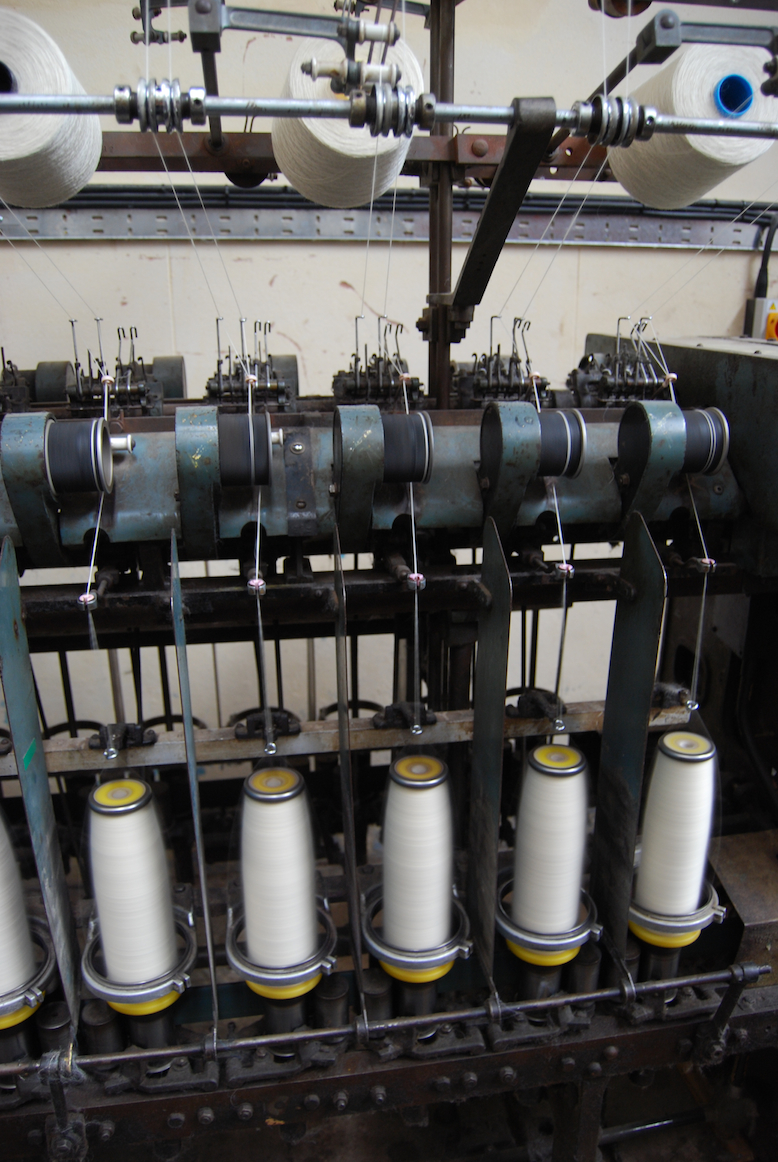
Fibre Harvest spinning mill in Devon, Image © Fibre Harvest/John Arbon and used with his permission.
1. Could you say a little about some of the vintage yarns you encountered while researching your book? What, for you, makes them different from many commercially-spun yarns spun today?
Many of the yarns were somewhat coarser than the average commercially-spun yarns we find in shops today, but with that comes longevity – hardwearing, long lasting items could be made from these yarns that lasted many years and could be easily darned to continue even longer or unravelled to be knitted again. There were more finer ply yarns than thick with 2 and 3 ply probably being the most common, although in the 1930s there was a surprisingly wide range of yarns available – even ‘Miss England Knitting Wool for Bathing Wear’ which included self-colours, marls and also space-dyed effects!
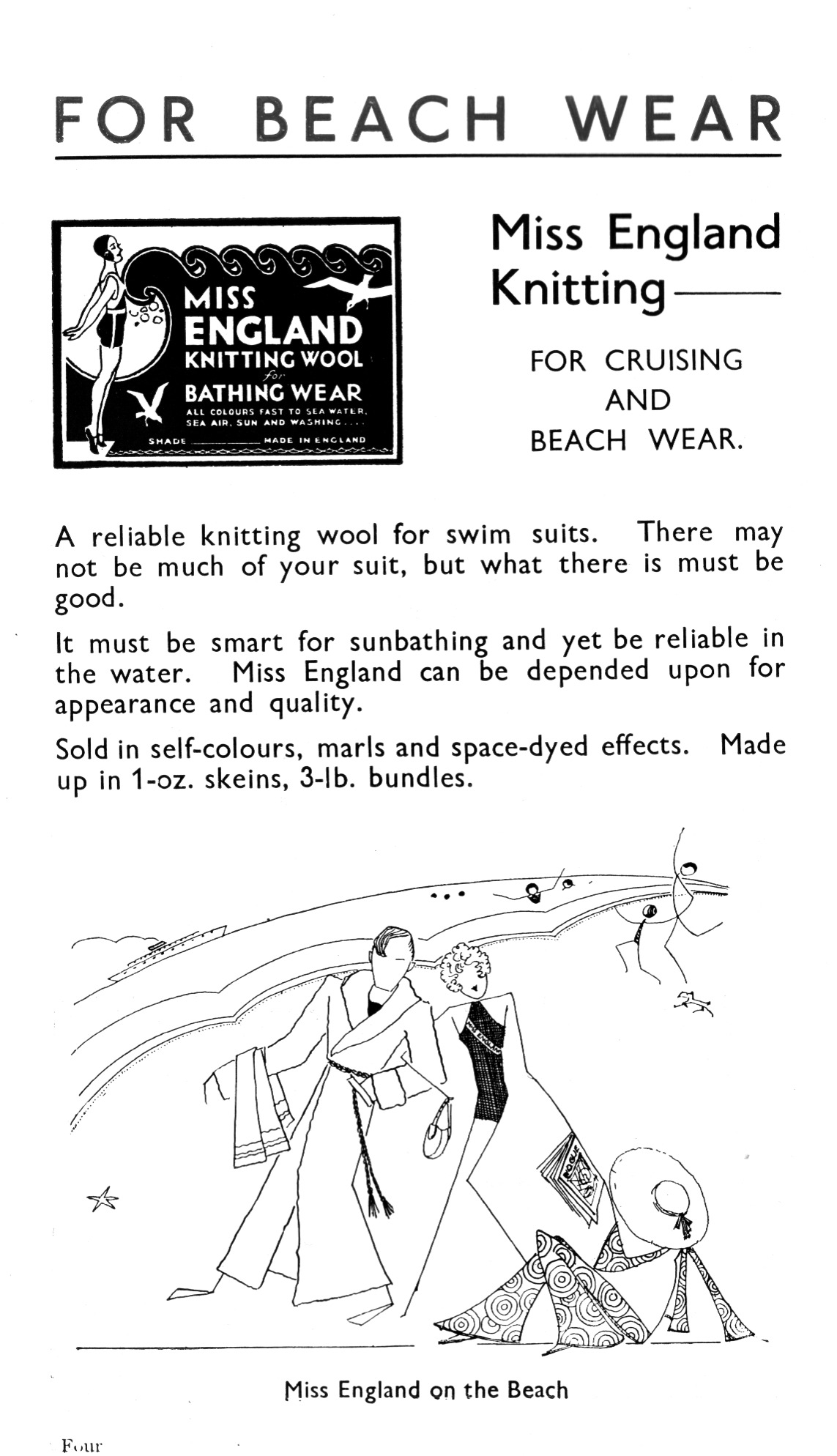
Vintage Ballband Images used courtesy of Susan Crawford
Whilst there were some blended yarns – such as wool and artificial silk the majority of yarns were pure wool – the breed of sheep often uncredited but wool nonetheless.
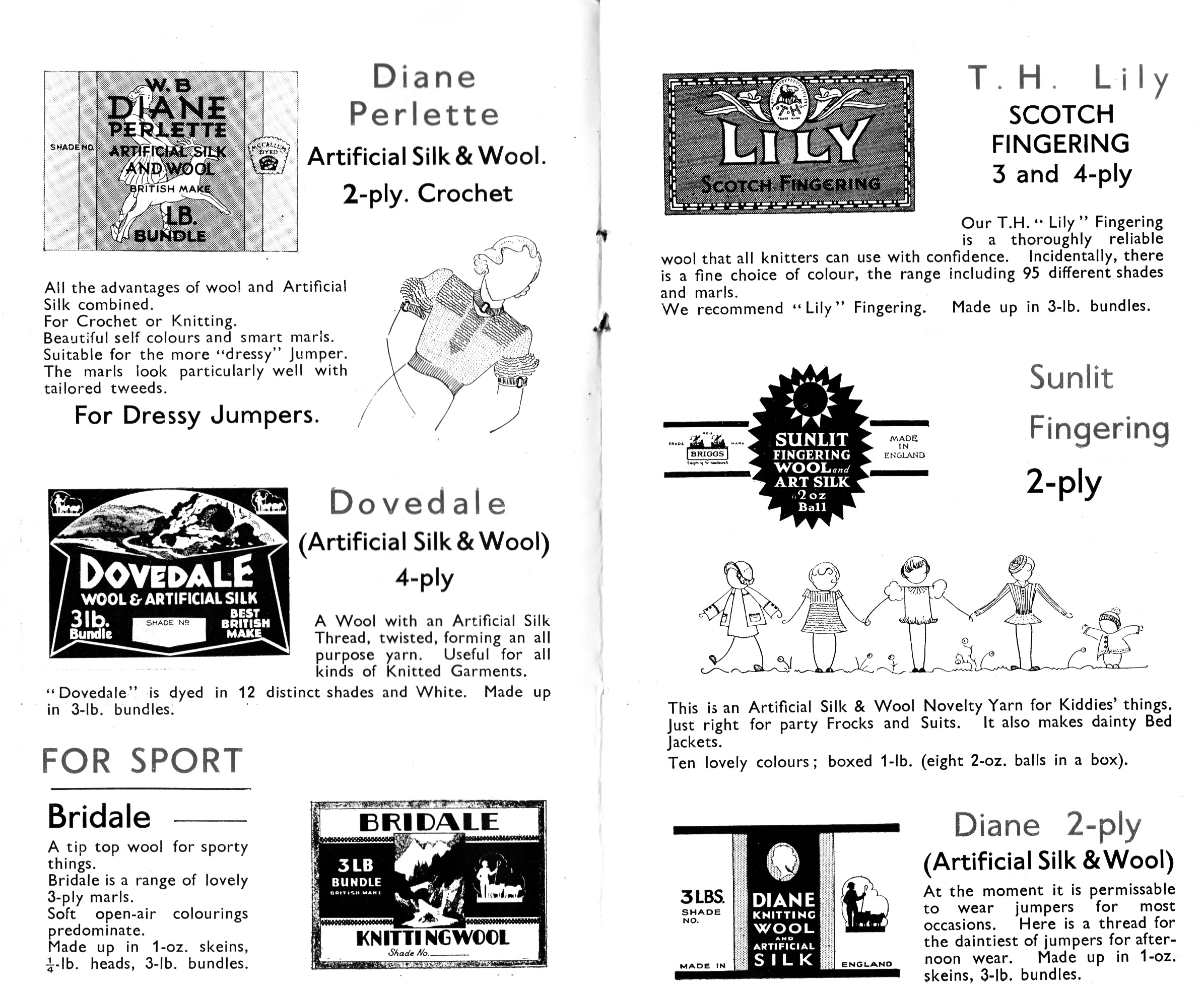
Vintage Ballband Images used courtesy of Susan Crawford
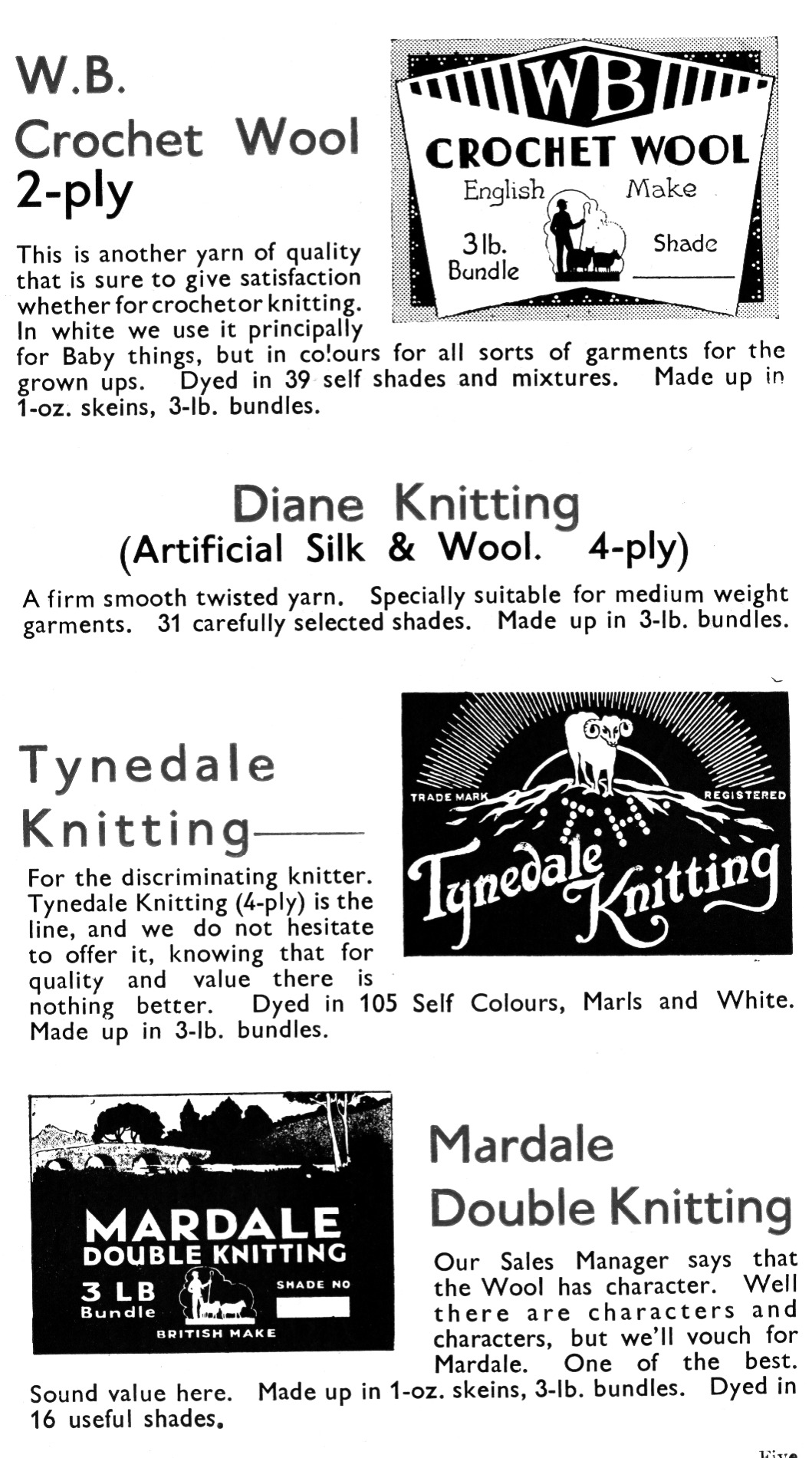
Vintage Ballband Images used courtesy of Susan Crawford
Most yarns tended to be solid colours with some marls and tweeds but the space dyed yarn mentioned above was rather unusual.
2. What, for you, are the distinctive characteristics of a good vintage yarn?
Stretch, recovery, definition, strength, body, warmth.
3. How did you begin to develop Excelana? What was the process?
John had been experimenting with the Exmoor fleece for some time, and discussed with me the possibility of working together to develop the fibre into a commercially viable knitting yarn, rather than it continuing to be used in generic British wool carpet production, as it was usually overlooked for knitting yarn production. I was initially sent samples of the undyed yarn. It had been spun but was not conditioned so had a different feel to the final product. However when I first began sampling we found that the fibres were still a little short overall producing a slightly uneven finish. It was at this point that John decided to combine it with 30% Bluefaced Leicester. This gave the yarn a longer staple and made it a more stable yarn for hand knitting.
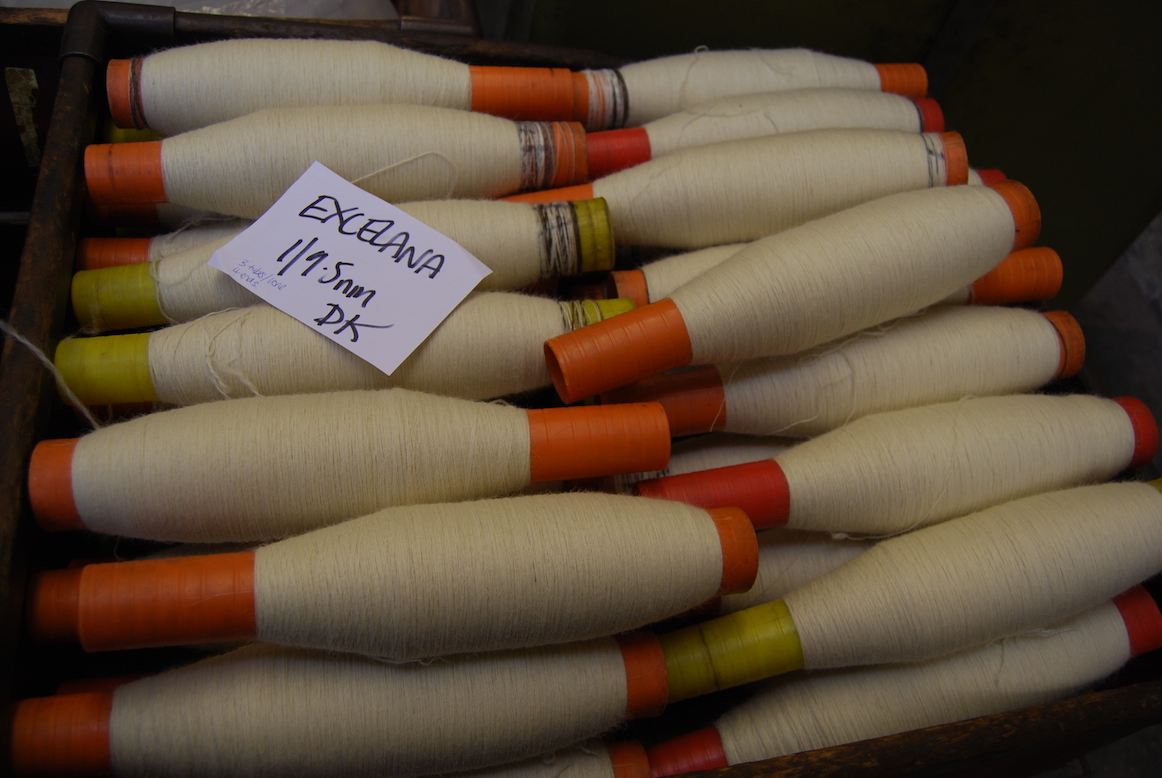
Excelana yarn in production, Image © Fibre Harvest/John Arbon and used with his permission.
Once the composition was decided upon it was then my job to choose colours and name them. I went through many old pattern books, shade cards and promotional leaflets to pick names that reflected those that I found but hopefully, without exactly replicating them. ‘Powdered Egg’ has proved to be the name that everyone notices. The dyeing stage followed and we nervously waited to see how well the yarn took colour. I wanted strong, solid colours that echoed the colours I had seen in the old shade cards and balls of yarn that I had studied, but until it came back from the dyers we had no idea how successful this process would be. In the end we had nothing to worry about as the yarn takes colour superbly and the colours matched the various swatches I had sent to the dyer perfectly.
Next came branding, which was again done in-house by my husband, Gavin who is a Graphic Artist. I particularly wanted the phrase ‘vintage yarns for fashion lovers’ to be incorporated onto the ball band as I felt this strap line explained the concept behind the yarn exactly.
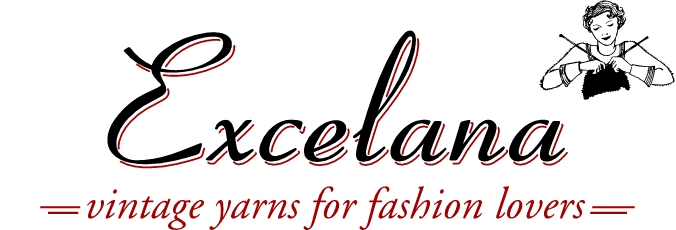
Excelana Logo, Image © Susan Crawford, and used with her permission.
The yarn was then put to work in garments for A Stitch in Time, Vol. 2, and really began to show itself as a great yarn for hand knitting, working well on textural, stocking stitch and colour work designs equally well.

A Fairisle Cardigan design from A Stitch in Time Vol. 2, knit in Excelana. Image © Susan Crawford, and used with her permission
4. Was it important to you to use that the yarn be grown as well as processed in the UK? Why?
It was, yes. The entire concept of the yarn was to use an under-utilised product living on the moors in North Devon and to show that wool manufactured from British breed sheep, living on damp, cold moors, can produce a commercially viable yarn that is a pleasure both to knit with and to wear and can be used for fashion knitwear as in A Stitch in Time, where I used the yarn extensively.
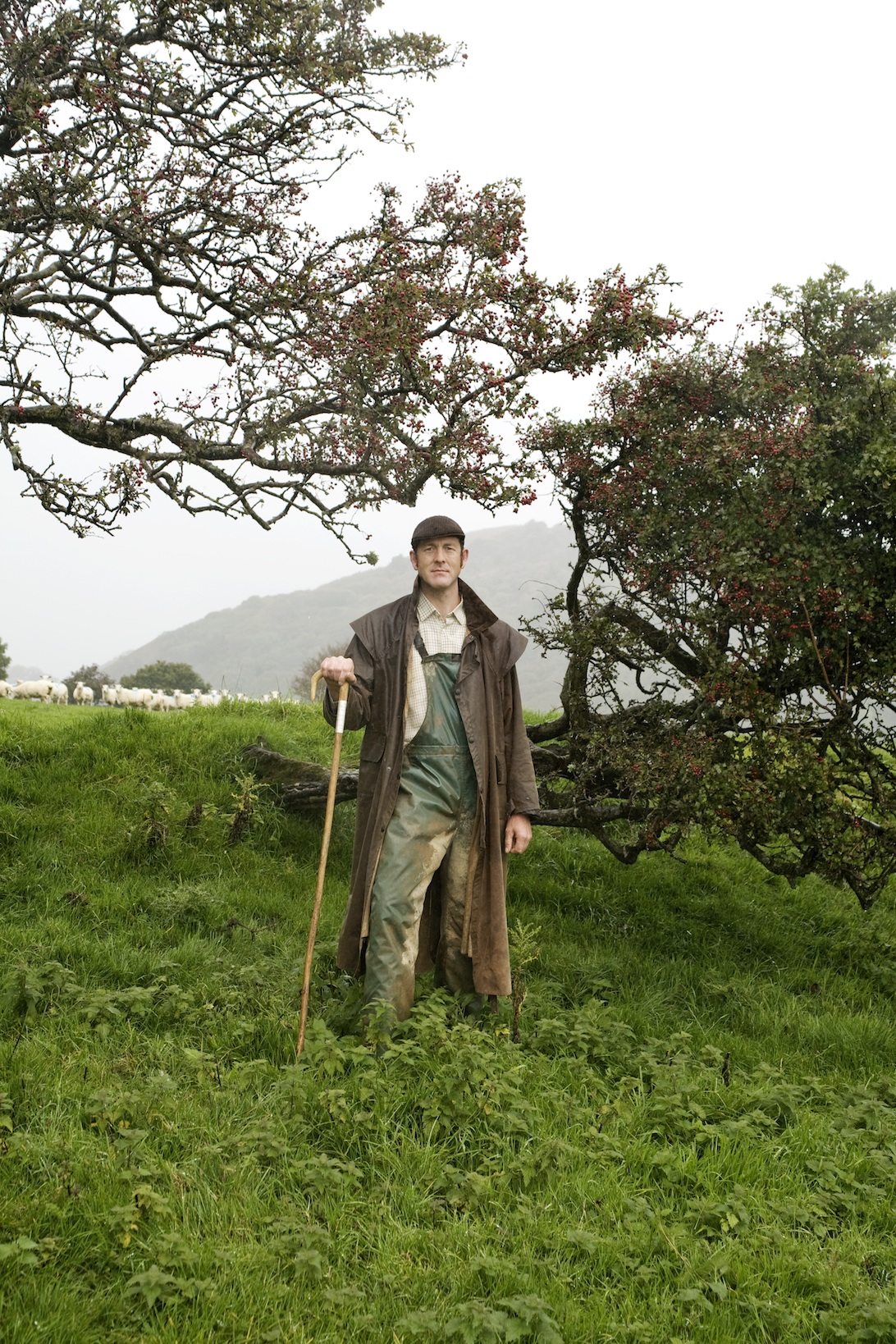
The Farmer from North Devon whose Bluefaced Exmoor Sheep provide 70% of the wool used in Excelana, Image © Fibre Harvest/John Arbon and used with his permission.
I don’t think it was ever even a consideration to source yarn from outside of the UK, but if we had the entire purpose of the endeavour would have been undermined to be honest. It is sad that so many people have bad memories of scratchy ‘wool’ jumpers that has put them off ‘wool’ (and in particular, british wool) for life, and we wanted to try and break that association and encourage the use of British breed fleece as hand knitting yarn.
5. Could you say a little about why the Exmoor / BFL blend makes a yarn so well-suited to it’s ‘vintage’ purpose?
Many vintage patterns rely on stretch, recovery, memory, strength, definition and body and the Exmoor/BFL blend has all these characteristics in abundance. Its stretch and recovery is incredible, making it suitable for vintage designs with quite extreme negative ease (where the finished garment is made considerably smaller than the intended wearer so that the garment has to stretch on the body to show off the pattern). The use of features such as gathered, box head and puff sleeves for example, require the yarn used to have some body so that these three dimensional features retain some shape without help, which again Exmoor/BFL blend does very well. There is a lot of colour work featured in vintage patterns, both intarsia and Fair Isle, and the stitches formed by the Exmoor/BFL cling together, making it a perfect yarn for colour work.
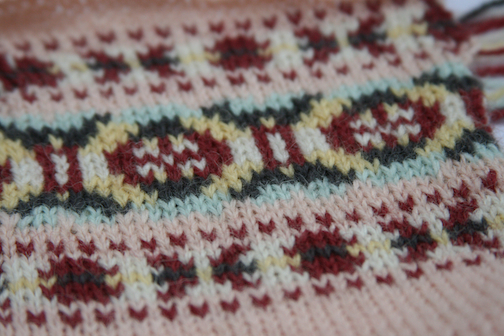
A Fairisle swatch for one of the designs in from A Stitch in Time Vol. 2, knit in Excelana. Image © Susan Crawford, and used with her permission
6. Could you tell us about some of the different processing stages of the yarn, and where they take place?
The Exmoor Blueface sheep live on Exmoor and are shorn on Exmoor. John’s mill is also in North Devon and this is where all the sorting, cleaning, processing and spinning takes place.

Carding wool for Excelana, Image © Fibre Harvest/John Arbon and used with his permission.
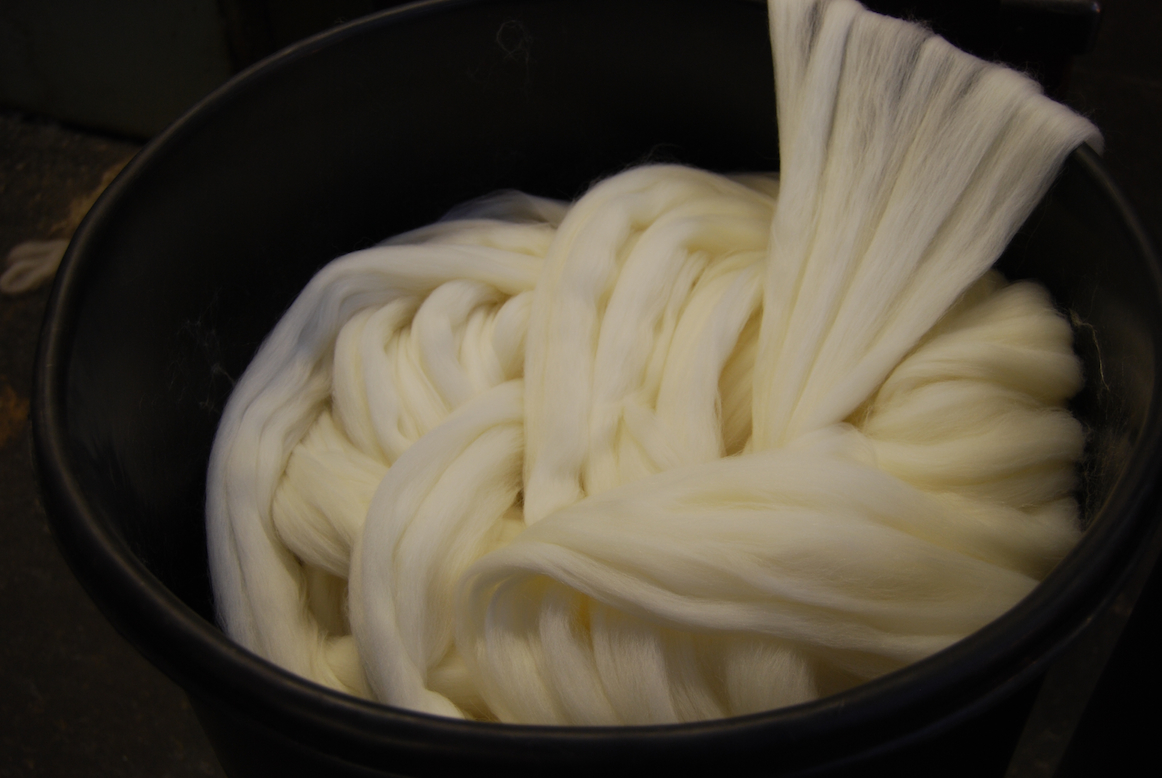
Combing wool for Excelana, Image © Fibre Harvest/John Arbon and used with his permission.
It is only when it leaves the mill to be dyed that it travels a relatively short distance to the Midlands. It goes from the dyer to the baller who is also in the Midlands, and then back to Devon. So it really is a ‘local’ yarn.
7. Could you say a little bit about the process of collaborating with John Arbon?
It was great fun and an easy collaboration. John and I have a very similar point of view and a shared lifelong love of ‘vintage’ so we understood what each other was looking for. We met as often as possible in Devon to discuss the project but a lot of the work was done ‘remotely’ with John in Devon and myself in Southport, communicating by email, telephone and post. The ‘big’ decisions however where usually made face to face so we could talk things through properly.
8. And a little about how the finished yarn behaves when knitted up?
The finished yarn is an absolute pleasure to knit with. It moves very smoothly over the needles – it flows. The finished fabric contains phenomenal stretch and memory, bouncing right back into shape. It is hardwearing with a slight halo unlike Shetland yarns, however when used for Fair Isle the fibres cling together in a very similar way to Shetland. It is fabulous for textural patterns creating real three dimensional structure to a cabled garment for example. And it is very, very warm. Over the limited tests I have done I would actually say it is warmer than Shetland which has quite taken me by surprise!
9. What influenced your decisions regarding the colour palette for the eventual yarns?
I did a lot of research into colours from the 1930s onwards both in clothes, interiors and knitting yarns of the time. I had access to an amazing shade card at the Shetland Museum which also gave me an insight into the incredible range of colours available in the 1930s. Coupled with this was a need to choose only 7 colours plus the undyed natural wool that would work together when knitted up. This resulted in great deliberation over certain of the choices. A scarlet red for example, whilst appropriate and popular did not work at all when placed with the other colours so hard choices had to be made. I think the colour that was the driving force for the others was Nile Green closely followed by Persian Grey and then Powdered Egg. There is a lot of grey in all the colours which is what unites them and really makes them a palette to work from.
10. Has being involved in developing Excelana given you unexpected or new ideas for patterns/design projects?
Very much so, particularly using negative ease which works so well in Excelana. And also, maybe more surprisingly, the limited colour palette has ‘forced’ me to be very creative with the colours I had available and I have particularly enjoyed experimenting with Fair Isle patterns using different combinations of only 8 colours. The changing results are very satisfying. The colours almost work like paints reacting to each other when partnered next to each other.
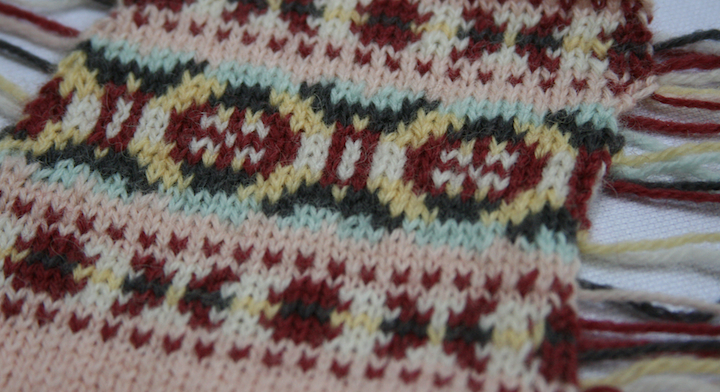
A Fairisle swatch for one of the designs in from A Stitch in Time Vol. 2, knit in Excelana. Image © Susan Crawford, and used with her permission
11. And just for fun: what is your favourite sheep?
Ooh, thats a toughie. In the past I would always have said Shetland as having spent a lot of time there in the last couple of years they are what I see in my head if I think ‘sheep’. However the Exmoor Blueface has proven itself to be an equally wonderful sheep that I don’t know whether I can choose between them I’m afraid. However, I’m going to go with Exmoor Blueface as without it there would be no Excelana.

Exmoor Blueface Sheep, Image © Susan Crawford, and used with her permission
That’s the end of the Q&A; we hope you agree that our mathematical equation is proven! For a review of how Excelana wears, you can read this from earlier in the month.
Please note: Excelana is available to buy online at www.susancrawfordvintage.com, where you can also buy copies of her wonderful books.